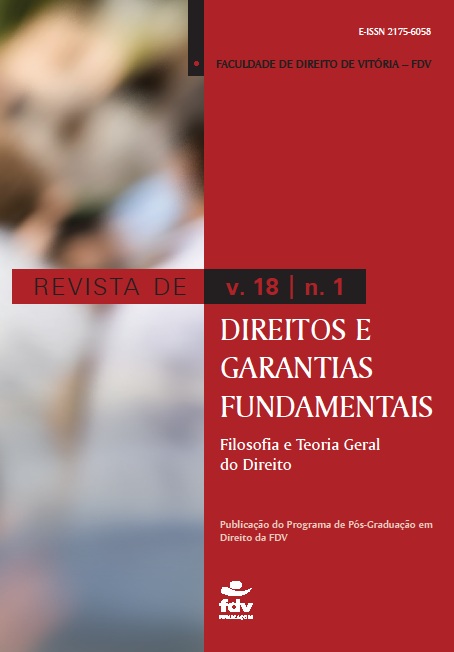The theory of the legal “contraintes”
DOI:
https://doi.org/10.18759/rdgf.v18i1.926Keywords:
Legal realism. Legal structure. Causality. Legal empirism.Abstract
Starting from a theory of interpretation stating that legal interprets are free, the Théorie des contraintes (Theory of constraints) tries to isolate some specific factors that influence, determine or simply occur in the law-decision process. The “constraints” reduce the field of possibilities for authors producing a legal enouncement, decision, or reasoning. It's not synonymous of obligations in the common legal sense, defining an obligation as a set of duties imposed by legal norms. The concept of “constraints” is not conceived in the order of “sollen” (ought) but in the order of “sein” (is). The hypothesis is as follows: there are specific legal constraints that are different from moral, economical, psychological or social factors, and such constraints also determine the legal decisions. This paper aims to conceptualize the specificity of such constraints and to establish typologies in order to allow a more precized identification.
Downloads
References
P. BRUNET, E. MILLARD et J. MERCIER (ed.), Les juristes et la hiérarchie des normes, Revus n° 21, 2013.
P. BRUNET, E. MILLARD et J. MERCIER (ed.), Le réalisme scandinave dans tous ses états, Revus n° 24, 2014.
V. CHAMPEIL-DESPLATS, M. TROPER, C. GRZEGORCZYK (ed.), Théorie des contraintes juridiques, Bruylant – LGDJ, coll. « La pensée juridique moderne », 2005.
J.-C. LE COUSTUMER, « Réalisme, scepticisme et contraintes juridiques », Droits, n° 36, 2002, p. 161.
E. MILLARD, Théorie générale du droit, Dalloz, 2006.
St . RIALS (ed.), L'argumentation des juristes et ses contraintes (1), Droits 2012 - n° 54.
St . RIALS (ed.), L'argumentation des juristes et ses contraintes (2), Droits 2012 - n° 55.
M. TROPER,, Pour une théorie juridique de l’Etat, PUF, coll. « Léviathan », 1994.
M. TROPER, "La notion de citoyen sous la Révolution Française", in Études en l'honneur de Georges Dupuis, Paris, 1997, p. 301
Downloads
Published
How to Cite
Issue
Section
License
Proposta de Aviso de Direito Autoral Creative Commons
1. Proposta de Política para Periódicos de Acesso Livre
Autores que publicam nesta revista concordam com os seguintes termos:
- Autores mantém os direitos autorais e concedem à Revista de Direitos e Garantias Fundamentais o direito de primeira publicação, com o trabalho simultaneamente licenciado sob a Creative Commons Attribution License que permitindo o compartilhamento do trabalho com reconhecimento da autoria do trabalho e publicação inicial nesta revista.
- Autores têm autorização para assumir contratos adicionais separadamente, para distribuição não-exclusiva da versão do trabalho publicada nesta revista (ex.: publicar em repositório institucional ou como capítulo de livro), com reconhecimento de autoria e publicação inicial nesta revista.
- Autores têm permissão e são estimulados a publicar e distribuir seu trabalho online (ex.: em repositórios institucionais ou na sua página pessoal) a qualquer ponto antes ou durante o processo editorial, já que isso pode gerar alterações produtivas, bem como aumentar o impacto e a citação do trabalho publicado (Veja O Efeito do Acesso Livre).


